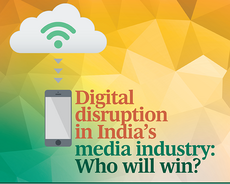 Online purchases made through mobile phones are steadily increasing in India and are likely to touch 40 million in 2016 from the current level of 30 million, reveals a ASSOCHAM and Grant Thornton joint study.
Online purchases made through mobile phones are steadily increasing in India and are likely to touch 40 million in 2016 from the current level of 30 million, reveals a ASSOCHAM and Grant Thornton joint study.
An additional 200 million Indians will access the internet in the next three years, with majority of them coming online through smartphones, according to a study on ‘Law & Technology: Evolving challenge as a result of fraud in E-commerce sector,’ jointly conducted by The Associated Chambers of Commerce and Industry of India (ASSOCHAM) and Grant Thornton.
The study says online travel dominates the Indian E-Commerce market, while online travel contributes a smaller share to the global E-Commerce market. Online travel accounts for nearly 71% of the E-Commerce business in India. This business has grown at a CAGR of 32% between 2009 and 2013. E-tailing, on the other hand, accounts for only 8.7% of organized retail and a minuscule 0.3% of total retail sales.
The percentage of working women in India grew 43% y-o-y in 2013, which constitutes 10% of the active online users in India. The women focused share of E-Commerce market will increase from 26% in 2013 to 35% in 2016, highlighted the ASSOCHAM and Grant Thornton joint study.
The maximum demand for online retail exists across 4,000-5,000 towns and cities in India, but there is no significant presence of physical retail in almost 95% of these locations. High real estate cost is one of the main reasons why organised retail is unable to expand at speeds expected earlier.
Around 75% of Indian internet users are in the age group of 15 to 34 years. This category shops more than the remaining population. Peer pressure, rising aspirations with career growth, and fashion trends encourage this segment to shop more than any other category and India. This category, therefore, clearly enjoys a demographic dividend that favours the growth of the India E-Commerce sector.
A significantly low (19%) but fast-growing internet population of 243 million in 2014 is an indicator of the sector’s huge growth potential in India. This indicates the potential of internet use in India and as internet penetration increases, the potential of growth of the E-Commerce industry will also increase.
The Indian E-Commerce market is estimated to grow at a Compounded Annual Growth Rate (CAGR) of 63% to reach ~USD 8.5 billion in CY 2016. Growth in the penetration levels of mobile and internet and increased consumer demand will drive this growth.
India’s current dynamics are similar to what existed in China then– growing broadband penetration, acceptance of online marketplaces, and lack of physical retail infrastructure in many places.
The number of smartphone users in India is projected to exceed 200 million, ranking next to the US as the world’s second largest smartphone market by 2016 due to increasing penetration of affordable smart mobile devices in the country.
With the growing number of smartphone users and major E-Commerce players, number of users relying on App-based platforms will eventually increase in the near future, noted the joint study.
The number of users making online transactions has also grown exponentially, and it is expected to increase from 11 million in 2011 to 38 million in 2015. Government of India’s plan to rebuild and modernise the Indian postal infrastructure and plan to implement Digital India will also affect the E-Commerce sector.
Both of these projects will help in increasing the reach of E-Commerce players to generally non-serviceable areas, thereby boosting the growth prospects for their businesses. E-Commerce sector is set to maintain its growth trajectory driven by the stabilisation of the ecosystem and interest demonstrated by VC players, combined with support from the government.



















